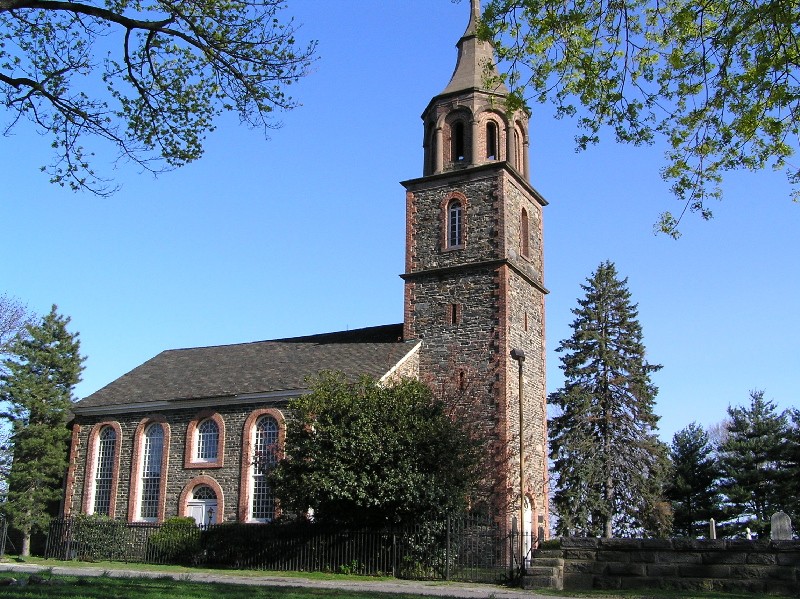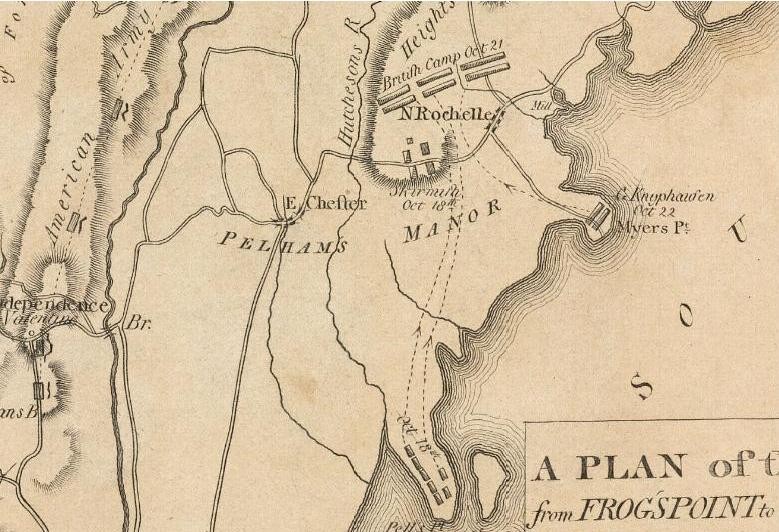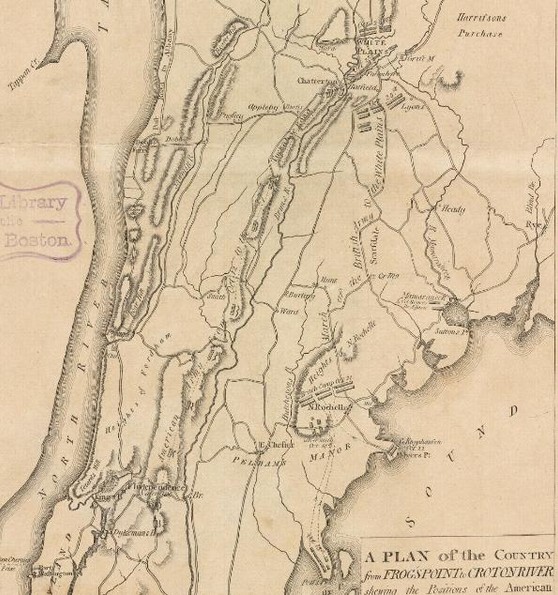Battle of Pell's Point
Introduction
Text-to-speech Audio
Images
Saint Paul's Church, which was used as a hospital for the British Army following the battle

Map of Pell's Point as well as the surrounding areas

Map showing the British movements from Pell's Point to White Plains

Backstory and Context
Text-to-speech Audio
The forces of British Commander-in-Chief William Howe and American Commander-in-Chief George Washington were in a sort of stalemate in New York City, after meeting in numerous engagements, including the Battle of Harlem Heights. After planning for 26 days, Howe decided the best course of action would not be a frontal assault, but a flanking maneuver. Howe gathered a force of 4,000 men, the majority of which were Hessians, and sailed in ships up the East River, landing at Throg’s Neck, hoping to flank the Americans and pin them to the Hudson River. But Washington caught wind of the attack, and soon moved his army to White Plains, leaving a meager force to garrison Fort Washington.
The British force
would arrive in two waves, the first of which would land at Throg’s neck on
October 12. As they had landed on a marshy peninsula off the mainland, Howe’s
troops would march westward toward King’s Bridge. About 25 American soldiers
would meet Howe’s troops along the way at a bridge near Westchester Square,
allowing the Patriots to move more troops into position.
At the
dawn of October 18, Howe decided to transport his forces around Throg’s Neck to
Pell’s Point. Another group, arranged in a columnn formation, would march overland from Westchester Square, from there ferrying across to Eastchester Baya. The only force opposing them was a 750 man garrison led by John
Glover. Glover had already seen the British make their approach and set an
ambush, setting his troops in staggered units, he instructed his men to
hold their positions for as long as they could, and when they fall back the
next unit in line would resume fighting. The ambush worked, with the British
sustaining heavy casualties in the resulting skirmish, and had to fall back.
Thirty minutes later, the British attacked full force with all they had,
pounding the American positions with cannon fire while the British infantry
advanced. but surprisingly, the cannons had little effect on the Americans, who
were able to stop the British infantry advance with a volley of musket fire.
This
back-and-forth battle took several hours, but the sheer number of the British
forces began to overwhelm the Americans, and Glover finally gave the order to
retreat across a bridge over the Hutchinson Stream. Howe and his forces did not
pursue. Glover and his forces retreated to Yonkers, the Americans
astoundingly only lost 8 men in the battle, and only 13 were wounded. Though
the battle was a defeat for the Americans, many believe that their intent was
never victory to begin with. The battle gave General Washington (who controlled
the main body of the army) the time he need to escape Manhattan and move to
White Plains. This battle sets an example of how the greatest militaristic
triumphs need not come from sheer numbers and victories, but rather from the
greatest strategies in picking which battles to give up.
